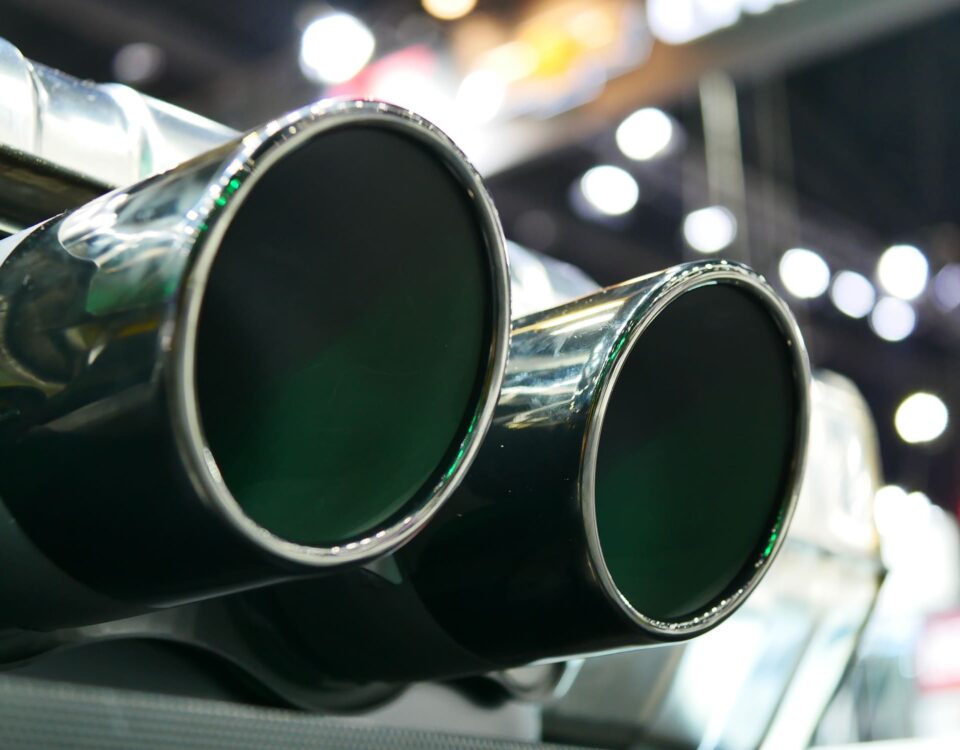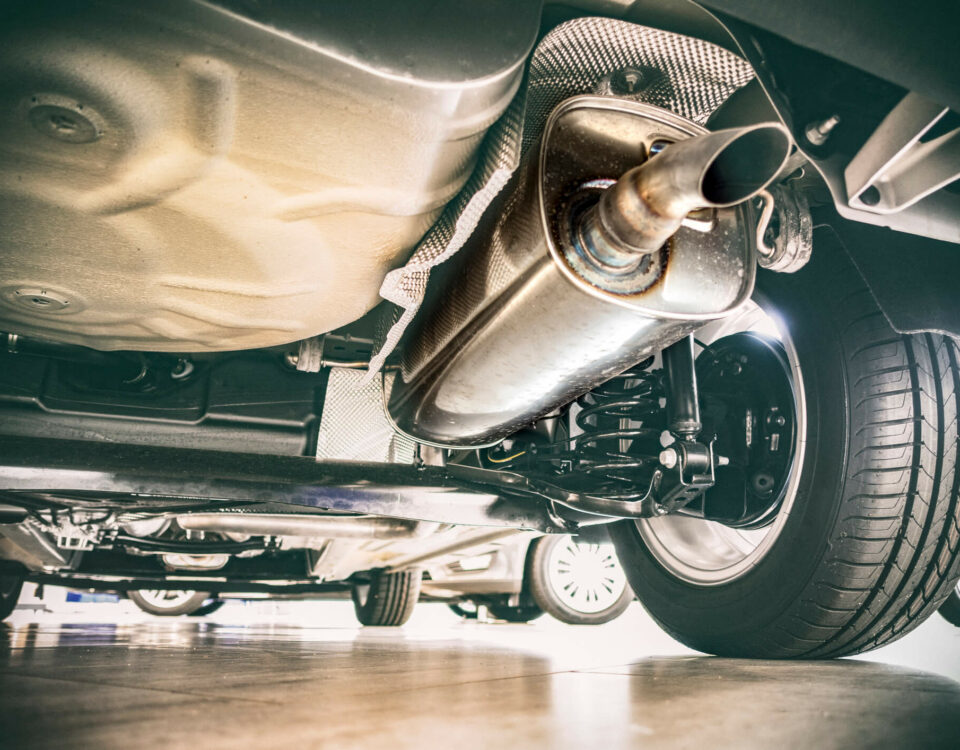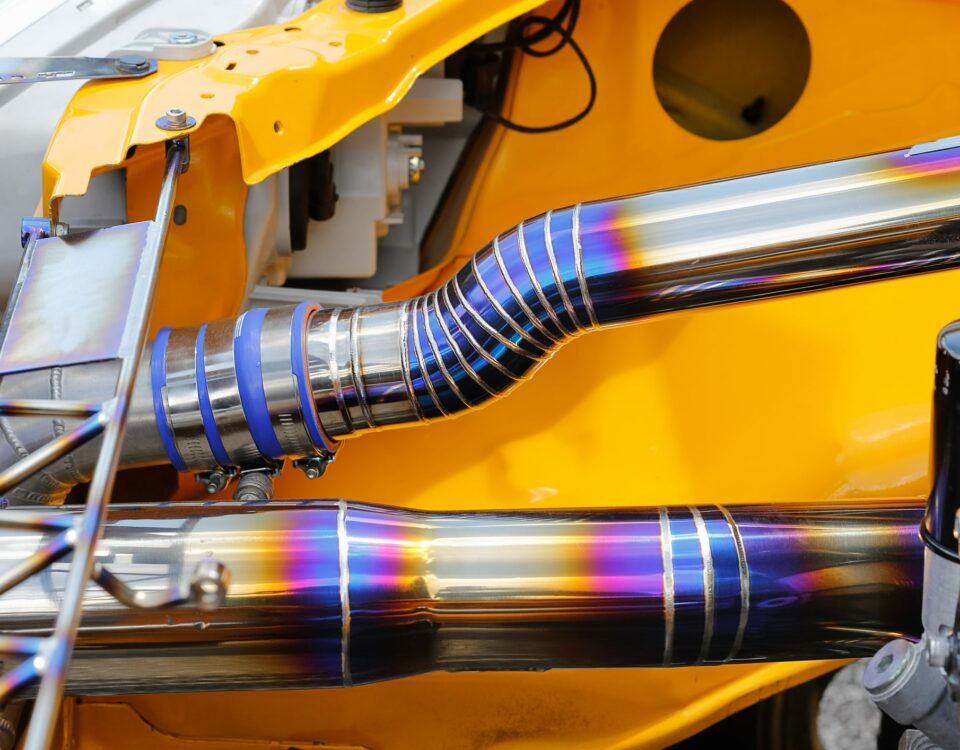What is a Cat-Back Exhaust System?
If you’re looking to enhance the performance of your car, you may have heard the term “cat back exhaust” being thrown around and wondered what is a catback exhaust exactly. In this article, we’ll explain what a catback exhaust system is, what it does, and why it’s different from your run-of-the-mill exhaust systems.
For starters, the “cat” in catback exhaust system is short for “catalytic converter”, a central part of your car’s emission control system, which cat back exhausts are fitted behind, hence the “back”. This relatively simple mod helps to free up exhaust gas flow and improve the noise of your engine by swapping out part of your exhaust system with a specially designed car performance exhaust system.
What is a Catback Exhaust System?
Catback exhaust systems are typically made up of a rear pipe, a resonator and a muffler, though they can also include a mid-pipe, x-pipe, h-pipe or y-pipe, depending on the make and model. These aftermarket cat back exhausts are designed to be freer flowing than stock products, as they use larger diameter pipes and smoother mandrel bends to make it as easy as possible for your engine to expel exhaust gases and improve performance.
By running pipes from the catalytic converter to the muffler and from the muffler to the exhaust tip, cat back exhaust systems improve exhaust gas flow, providing small performance boosts. However, your performance gains may be limited if your catalytic converter restricts gas flow, as a catback exhaust system is installed ‘downstream’ of the converter.
What Does a Cat-Back Exhaust Do?
In layman’s terms, a catback exhaust system provides a smoother, more streamlined path for exhaust gases to exit your car, allowing your engine to work more efficiently. Although fitting high-quality pipes behind a major restriction in your exhaust system – the catalytic converter – may seem redundant, the enduring popularity of cat back exhausts shows that they can make a significant difference to your car’s performance.
By replacing the rear section of your exhaust with a quality cat-back car performance exhaust system, you can reduce the backpressure and allow your engine to cycle with more speed and efficiency. Thanks to their larger diameter pipes and high-quality mandrel bends, a good cat-back exhaust system will increase the efficiency of your car’s exhaust system, and with increased efficiency comes increased power.
What is a Catback Exhaust, and How is it Different From Regular Exhausts?
Basically, catback exhaust systems upgrade regular exhausts, improving the flow of exhaust gases and the performance of your engine with wider pipes and smoother bends. Beyond these incremental advantages, there’s not much to tell cat-back and regular exhausts apart, as they are commonly made from the same types of materials in roughly the same shape.
The main difference between cat back exhausts and stock exhausts is the improved performance that cat-back systems provide:
Regular Exhaust Systems
Stock exhaust systems include a muffler, tailpipe and exhaust tips as standard, and while few manufacturers optimise their stock offerings for high performance, they do the job.
Cat-Back Exhaust Systems
Cat-back exhaust systems have more efficient gas flow, yielding increased engine performance, thanks to their larger exhaust tubes and mandrel bends.
How Much HP Will You Gain From Cat-back Exhausts?
Because the success of a catback exhaust system depends on various factors – like catalytic converter restrictions, engine power, etc. – there’s no easy way to calculate how much horsepower you stand to gain. If you have a restrictive exhaust, then a cat back exhaust could massively improve your car’s performance, and contrastingly, if your exhaust already flows well, then a cat-back won’t be much of an upgrade.
Typically, a cat-back exhaust system will increase your car’s horsepower by somewhere between 5 and 50 brake horsepower. This will vary greatly depending on the condition of your exhaust and engine, so you should ask your mechanic if getting a cat-back exhaust is the best way to improve the performance of your car.
Are Cat-Back Exhausts Illegal?
Current UK emission regulations forbid removing or altering your car’s catalytic converter, so as long as your cat-back system doesn’t interfere with your ‘cat’, you don’t have to worry. However, any car performance exhaust system that increases the noise your car makes above stock limits is technically illegal:
According to The Road Vehicles (Construction and Use) Regulations 1986, it is illegal to alter your exhaust system “so as to increase the noise made by the escape of exhaust gases.” While the average police officer may not carry a decibel meter, we strongly recommend avoiding aftermarket mods that make your car louder, as they are technically illegal and widely frowned upon.
Is a Cat-Back Exhaust Worth It?
As one of the most mechanically simple ways to increase your car’s horsepower, cat-back exhausts can provide excellent value for money with minimal risk of damaging your car. All the mechanic has to do is remove your exhaust below the catalytic converter and bolt on the new car performance exhaust system, and you’re away to the races!
In addition to boosting your horsepower, cat-back exhausts can make a massive difference to the sound of your car, especially if you choose exhaust tips designed for acoustics. Although cat-back exhaust systems may seem like a lot of fuss for a little piping, they can provide highly effective results with just a few mechanical tweaks, making them well worth the cost of seeing an exhaust specialist, such as DKU in Birmingham.
Conclusion
We hope this article has provided a thorough answer to the question of what is a catback exhaust and provided advice on how they can help improve the performance of your car. While they may not provide a big performance boost for all cars, cat-back exhausts are a simple and effective way to improve gas flow in your exhaust system beyond what stock exhausts are capable of.



